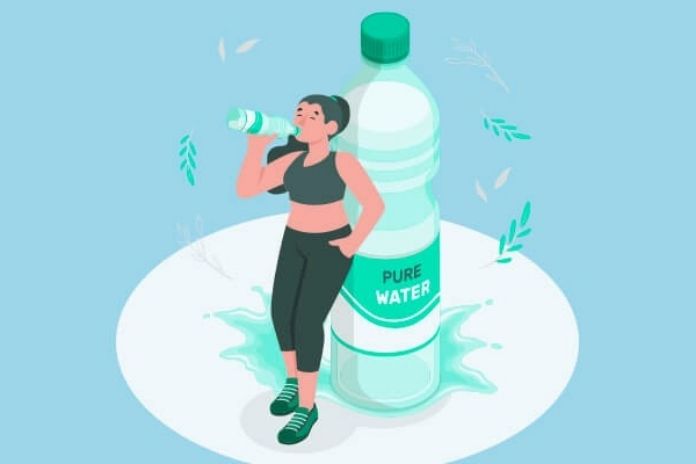Prolonged and intense physical activity involves a substantial loss of fluids with sweating, especially in a humid environment. Failure to replenishing fluids in the body can cause physiological alterations that impact resistance to effort.
Among the most common physiological alterations we have:
- increased body temperature and lung ventilation,
- the increased cardiovascular effort,
- a reduction in blood flow to the brain and muscles,
- increased dependence on muscle glycogen as an energy source,
- impaired muscle metabolism and aerobic capacity.
The Importance Of Water: Body Composition And Needs
60% of our weight is made up of water. Despite this, our water reserves are not consistent. Suffice it to say that some organs, such as the brain and heart, liver and lungs, comprise an even greater quantity of liquids, respectively 75% for the former and 85% for the latter.
A loss of fluids greater than one and a half liters generates the first manifestation of dehydration problems, including neurological issues that can lead to losing consciousness if dehydration reaches 4% of body weight.
The water requirement is linked to the combination of various factors such as body temperature, ambient humidity, and the type of physical activity performed. The latter depends on the number of liquids lost through sweat, reaching up to 2 liters in an hour.
Minerals are also lost through sweat, so it is necessary to replenish sodium chloride (standard table salt) if the loss exceeds 1% of the weight, potassium and magnesium if the loss exceeds 2.5%.
How To Keep The Right Level Of Hydration During Exercise?
It is essential to point out that it is impossible to compensate for dehydration concurrently with or a few hours before physical activity. Given an intense and prolonged physical effort, it is essential to hydrate yourself sufficiently in the previous days. Otherwise, it will not be possible to rebalance the water balance due to a significant loss of fluids during the last days.
If you do physical activity consistently, you should drink:
- Half a liter of water in the two hours preceding the action;
- 125-250 ml of water every 15-20 minutes during exercise;
- About a liter of water for every pound lost after exercise.
In light of the above, it is also essential to maintain proper urine production. According to some recent scientific research, every human being should urinate at least 1.5 liters per day. If you urinate less than a liter, you are considered dehydrated. Since measuring the amount of urine produced is challenging, you should consider having an urge to urinate at least once every 4-5 hours. Also, the urine must be light in color; if the urine is yellowish, it may indicate dehydration, and therefore it becomes necessary to drink water again.
The risks of dehydration are pretty evident, but it is essential to underline that excessive water consumption can also be harmful to our bodies.
To avoid this manifestation, it is sufficient to observe some precautions such as:
- Avoid drinking too much, especially if you are not thirsty
- Do not drink more than one liter of water every hour
- Always try to replenish sodium chloride at the end of your physical activity
ALSO READ: TOP 5 SHEATHING EXERCISES

